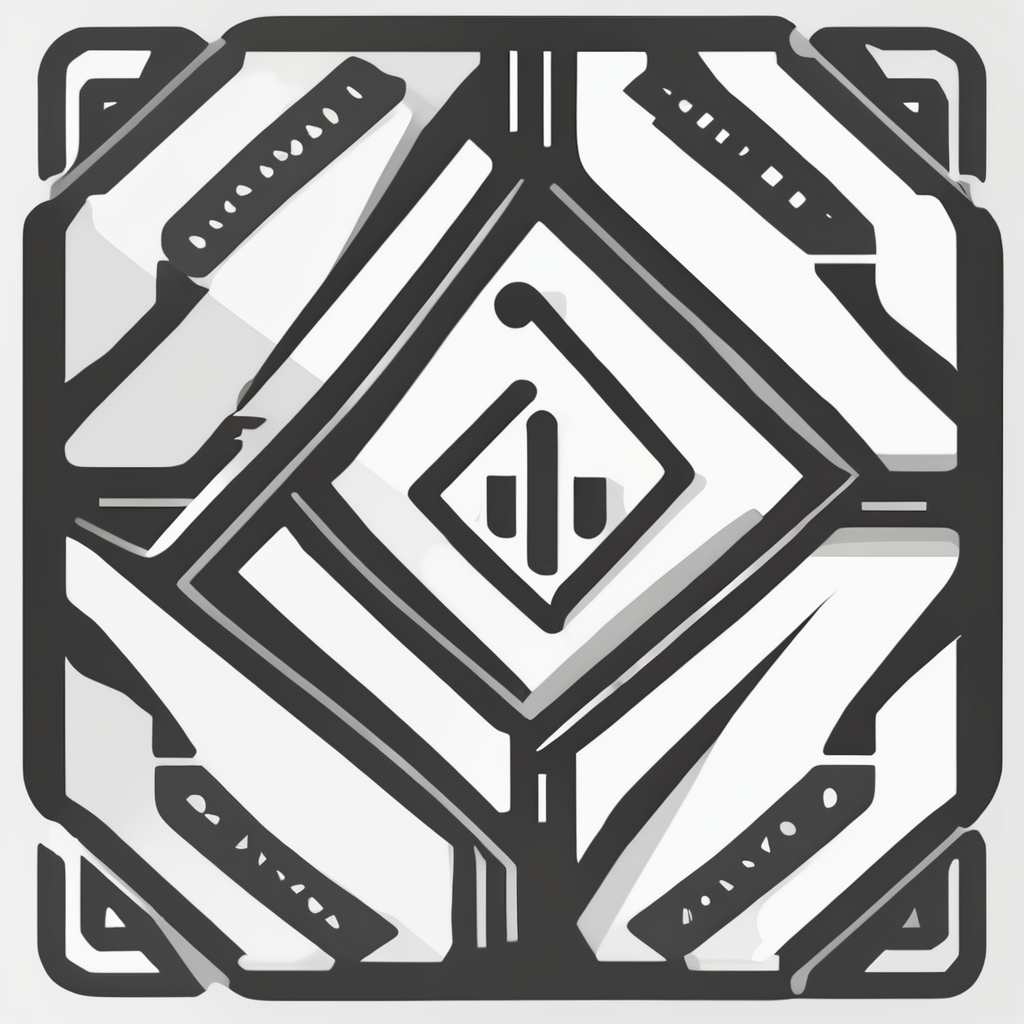Unveiling the Quantum Internet Revolution: Future Cybersecurity Impacts You Need to Know
The Quantum Computing Era: A Double-Edged Sword
As we step into the era of quantum computing, it’s clear that this technology is not just a mere advancement, but a revolution that will reshape the way we handle information and ensure cybersecurity. Quantum computers, with their ability to process vast amounts of data exponentially faster than classical computers, promise unprecedented benefits but also pose significant threats to our digital security.
The Power of Quantum Computing
Quantum computing leverages the principles of quantum mechanics to solve complex problems that are currently intractable for classical computers. This power, however, is a double-edged sword. On one hand, it can drive innovation in fields like medicine, finance, and climate modeling. On the other hand, it can potentially break the encryption algorithms that secure our digital transactions and communications.
Have you seen this : Transforming emergency response: the role of ai in advanced structural damage detection in buildings
“Quantum computers could potentially break these protocols, jeopardizing the security of sensitive information and systems,” warns a report from Accutive Security[4].
The Cybersecurity Threats of Quantum Computing
The advent of quantum computing introduces several critical cybersecurity threats that organizations and individuals must be aware of.
Additional reading : Transforming public infrastructure: the impact of iot technology on monitoring and maintenance solutions
Vulnerability of Current Encryption
Current encryption methods, such as RSA and Elliptic Curve Cryptography (ECC), rely on mathematical problems that are computationally difficult for classical computers to solve. However, quantum computers can use algorithms like Shor’s algorithm to break these encryption methods, rendering sensitive data and secure communications vulnerable to attacks[4].
“Any classically encrypted communication could be wiretapped and is potentially subject to data exfiltration once quantum decryption solutions are viable,” explains an article on Security Intelligence[2].
Harvest Now, Decrypt Later Attacks
One of the most alarming threats is the “harvest now, decrypt later” attack. Here, attackers can collect encrypted data now and wait for the development of sufficient quantum computing power to decrypt it later. This means that even data encrypted today could be compromised in the future, highlighting the urgency of transitioning to quantum-resistant encryption methods[2][4].
Preparing for the Post-Quantum World
To mitigate these threats, it is crucial to prepare for the post-quantum world by adopting new cryptographic standards and technologies.
Transitioning to Quantum-Resistant Cryptography
Organizations must transition their Public Key Infrastructure (PKI) systems to support quantum-resistant standards. This includes adopting algorithms like CRYSTALS-Kyber for encryption and CRYSTALS-Dilithium for digital signatures, as recommended by NIST[4].
Key Steps for Transition:
- Assess Current Systems: Evaluate the current cryptographic protocols in use.
- Implement Hybrid Approaches: Combine traditional and post-quantum cryptographic techniques to provide a layered defense during the transition period.
- Adopt NIST-Standardized Algorithms: Use algorithms like CRYSTALS-Kyber and CRYSTALS-Dilithium.
- Explore Alternative Authentication Methods: Investigate quantum-resistant approaches like lattice-based cryptography or hash-based signatures.
Canada’s National Quantum Strategy
Canada’s National Quantum Strategy (NQS) is a prime example of proactive measures being taken to address these challenges. The NQS aims to make Canada a global leader in quantum technology, ensure the protection of Canadians’ privacy and cybersecurity, and facilitate the rapid development and adoption of new quantum detection technologies[1].
“Assuring the protection of Canadians’ privacy and cybersecurity in a quantum computing world through a secure national quantum communication network and a post-quantum cryptography initiative,” is one of the key missions of the NQS[1].
Impact on Digital Transactions and Bitcoin
The impact of quantum computing on digital transactions, including cryptocurrencies like Bitcoin, is particularly significant.
Bitcoin and Quantum Computing
Bitcoin’s security relies heavily on cryptographic algorithms such as ECDSA (Elliptic Curve Digital Signature Algorithm). However, these algorithms are vulnerable to quantum attacks, particularly through Shor’s algorithm. An advanced quantum computer could potentially derive private keys from public keys, compromising the security of Bitcoin transactions[5].
“An quantum computer with 13 million qubits could crack a Bitcoin public address (type P2PK) in 24 hours,” highlights an article on Bit2Me[5].
Practical Insights and Actionable Advice
Given the looming threats, here are some practical insights and actionable advice for individuals and organizations:
Stay Informed
- Keep up-to-date with the latest developments in quantum computing and cybersecurity.
- Follow guidelines from reputable organizations like NIST and national cybersecurity agencies.
Implement Quantum-Resistant Measures
- Start transitioning to quantum-resistant encryption methods.
- Use hybrid cryptographic approaches to ensure a layered defense.
Secure Data Storage
- Ensure that all sensitive data is stored using quantum-resistant encryption.
- Regularly update and patch systems to protect against emerging threats.
Educate and Train
- Educate employees and stakeholders about the risks and benefits of quantum computing.
- Provide training on the use of new cryptographic tools and best practices.
The Future of Cybersecurity in a Quantum World
As we move forward into a world where quantum computing is becoming more prevalent, it’s essential to understand the broader implications for cybersecurity.
Quantum Key Distribution
Quantum key distribution (QKD) is a method of secure communication that uses quantum mechanics to encode, transmit, and decode messages. QKD offers theoretically unbreakable encryption, making it a promising solution for secure communication in the quantum era[1].
Integration with Other Technologies
Quantum computing will also integrate with other advanced technologies like artificial intelligence (AI) and machine learning (ML). This integration can enhance cybersecurity by providing more sophisticated threat detection and response systems.
“Quantum computers could enhance AI and ML capabilities, leading to more robust cybersecurity systems,” notes a report on the intersection of quantum computing and AI[2].
The quantum internet revolution is upon us, bringing with it both immense opportunities and significant cybersecurity challenges. As we navigate this new landscape, it’s crucial to be proactive in adopting quantum-resistant technologies, staying informed about the latest developments, and ensuring that our digital world remains secure.
Table: Comparison of Classical and Quantum Cryptography
| Feature | Classical Cryptography | Quantum Cryptography |
|---|---|---|
| Encryption Speed | Relatively slow | Exponentially faster |
| Security | Vulnerable to quantum attacks | Theoretically unbreakable |
| Key Distribution | Traditional key exchange | Quantum key distribution (QKD) |
| Algorithm Examples | RSA, ECC | CRYSTALS-Kyber, CRYSTALS-Dilithium |
| Threats | Classical computer attacks | Quantum computer attacks |
| Future Readiness | Needs transition to quantum-resistant | Already quantum-resistant |
In the words of Gilles Brassard, a renowned cryptographer, “The advent of the quantum computer risks reducing cybersecurity to nothing. It could decrypt all the information that has circulated since the creation of the Internet”[3].
As we embark on this journey into the quantum era, it’s clear that understanding and preparing for these changes is not just a necessity, but a critical step in securing our digital future.











